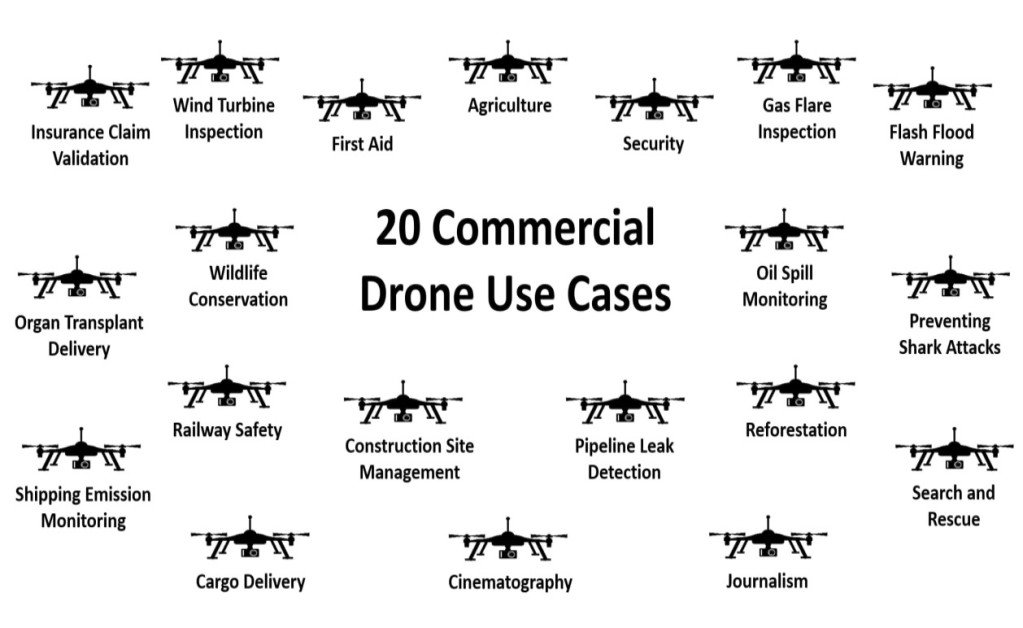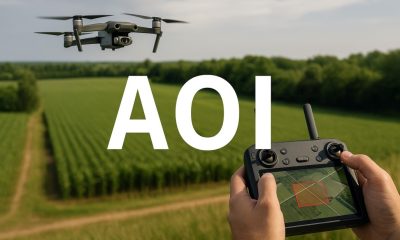U.S. Drone Regulations
Exemptions & Special Use Cases for Drones in the U.S.
Published
12 months agoon
Table Of Contents

Exemptions & Special Use Cases
Drones are versatile tools with applications that extend far beyond recreational and standard commercial use. Certain industries and operations require special permissions and exemptions from standard FAA regulations to safely and effectively use drones. This section outlines key special use cases and the necessary exemptions to operate within these contexts.
Agriculture
Precision Agriculture:
- Drones are widely used in precision agriculture to monitor crop health, optimize irrigation, and manage pests. They provide high-resolution aerial imagery and data analytics to support decision-making.
- Exemptions: Agricultural drone operations often require exemptions for flying beyond visual line of sight (BVLOS) and for operations over large areas. Operators can apply for Part 107 waivers to conduct these activities.
Spraying and Seeding:
- Drones equipped with spraying systems are used for applying pesticides, herbicides, and fertilizers. They can also be used for seeding in hard-to-reach areas.
- Exemptions: Operators need special waivers for carrying hazardous materials and for low-altitude operations over crops. The FAA may also require proof of pilot certification for handling and dispersing chemicals.
Construction
Site Surveys and Mapping:
- Drones are used in construction for site surveys, mapping, and 3D modeling, providing accurate and up-to-date information about construction progress and site conditions.
- Exemptions: Operations may require waivers for BVLOS to cover large construction sites and for flights over people if the site is active and populated with workers.
Inspection and Monitoring:
- Drones facilitate the inspection of structures such as bridges, towers, and buildings, reducing the need for manual inspections and enhancing safety.
- Exemptions: Waivers for operations near structures and for flights over people may be necessary. Additionally, operators may need permissions to fly in controlled airspace if the construction site is near an airport.
Delivery Services
Package Delivery:
- Companies like Amazon and Google are developing drone delivery services to transport packages directly to customers, offering faster and more efficient delivery options.
- Exemptions: Delivery operations typically require multiple waivers, including those for BVLOS, flying over people, and operations in populated areas. The FAA’s Part 135 certification may also be required for commercial package delivery services.
Emergency Response
Search and Rescue:
- Drones are invaluable in search and rescue operations, providing real-time aerial views, thermal imaging, and the ability to reach areas inaccessible by ground vehicles.
- Exemptions: Emergency response operations may need immediate waivers for BVLOS, flights over people, and operations in restricted or controlled airspace.
Disaster Relief:
- In the aftermath of natural disasters, drones are used to assess damage, deliver supplies, and assist in recovery efforts.
- Exemptions: Rapid deployment in disaster zones may require expedited waivers for various operational restrictions, including night operations and BVLOS.
Beyond Visual Line-of-Sight (BVLOS) Operations
BVLOS operations allow drones to fly beyond the operator’s line of sight, which is crucial for large-scale industrial applications.
Typical Use Cases:
- Infrastructure inspection (e.g., pipelines, power lines)
- Agricultural monitoring and spraying
- Long-range delivery services
Exemptions: Obtaining a BVLOS waiver requires demonstrating robust safety measures, including detect-and-avoid technology, reliable communication systems, and detailed risk mitigation strategies.
Waivers and the Application Process
Common Waiver Requests:
- Operations Over People (14 CFR §107.39): Necessary for flights that occur over crowds or populated areas.
- Night Operations (14 CFR §107.29): Required for operations conducted during nighttime hours without anti-collision lighting.
- BVLOS (14 CFR §107.31): Permits drone flights beyond the operator’s visual line of sight.
- Multiple Drones (14 CFR §107.35): Allows a single operator to control multiple drones simultaneously.
Application Process:
- Prepare a Safety Case: Applicants must provide a detailed description of the proposed operation, including safety measures and risk mitigation strategies.
- Submit to FAA: Applications are submitted through the FAA’s DroneZone portal, where they are reviewed on a case-by-case basis.
- Review and Approval: The FAA evaluates the safety case and may request additional information or modifications. Approved waivers include specific conditions and limitations.
Key Considerations for Waiver Applications:
- Demonstrate thorough risk assessments and mitigation plans.
- Incorporate advanced technologies such as detect-and-avoid systems.
- Provide evidence of operator training and experience.
- Clearly outline operational procedures and safety protocols.
Industry and Advocacy Group Perspectives
Industry Viewpoint:
- Many industries advocate for more flexible regulations to accommodate the rapid advancement of drone technology. They emphasize the potential for drones to improve efficiency, safety, and innovation across various sectors.
Advocacy Groups:
- Organizations like the Association for Unmanned Vehicle Systems International (AUVSI) and the Small UAV Coalition work to influence policy and promote the benefits of drone technology. They also provide resources and support for operators seeking waivers and exemptions.
Frequently Asked Questions About Drone Exemptions in the U.S.
1. What types of drone operations typically require FAA waivers or exemptions?
Drone operations that often require FAA waivers or exemptions include:
- Beyond Visual Line of Sight (BVLOS): Flying drones beyond the operator’s line of sight.
- Operations Over People: Flying drones over people not directly involved in the operation.
- Night Operations: Conducting drone flights during nighttime without anti-collision lighting.
- Multiple Drones: One operator controlling multiple drones simultaneously.
- Flying in Controlled Airspace: Operations in Classes B, C, D, and certain Class E airspace without prior authorization. These waivers allow for expanded use of drones under controlled conditions and require demonstrating that the operation can be conducted safely.
2. How can I apply for a Part 107 waiver from the FAA?
To apply for a Part 107 waiver:
- Prepare Your Safety Case: Describe your proposed operation in detail, including safety measures and risk mitigation strategies.
- Submit the Application: Use the FAA’s DroneZone portal to submit your waiver request. You will need to provide detailed information about your drone, the nature of your operation, and how you will ensure safety.
- FAA Review: The FAA reviews waiver applications on a case-by-case basis, which may involve additional questions or requests for more information. Successful applications demonstrate thorough planning and robust safety measures.
- Approval: If approved, the FAA will issue a waiver specifying the conditions and limitations under which the operation can be conducted.
3. What are the common requirements for obtaining a BVLOS waiver?
Common requirements for obtaining a BVLOS waiver include:
- Detect-and-Avoid Technology: Implementing technology that can detect other aircraft and obstacles to avoid collisions.
- Reliable Communication Systems: Ensuring continuous and reliable communication between the drone and the control station.
- Detailed Risk Assessment: Conducting and documenting a comprehensive risk assessment, including potential hazards and mitigation strategies.
- Operational Procedures: Developing and following strict operational procedures to ensure safety during BVLOS flights.
- Pilot Training: Demonstrating that the remote pilot and crew are adequately trained and proficient in BVLOS operations. These elements help the FAA assess whether the proposed BVLOS operation can be conducted safely.
To Learn more about acronyms used in this article visit our Drones Acronym Page.











